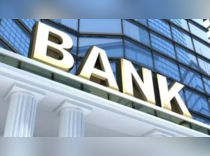 Agencies
Agencies"Under the baseline scenario, the aggregate CRAR (capital to risk weighted asset ratio) of 46 major banks is projected to slip from 16.7% in March 2024 to 16.1% by March 2025," the RBI said in its June 2024 Financial Stability Report.
"It may go down to 14.4% in the medium stress scenario and to 13.0% under the severe stress scenario by March 2025, which is still above the minimum capital requirement," the central bank said. The minimum capital requirement is 9%.
The RBI's stress tests attempt to assess capital ratios over a one-year horizon under a baseline scenario and two adverse scenarios. The baseline scenario is derived from forecasted values of macro variables, while the adverse scenarios are stringent conservative assessments under hypothetical adverse conditions, the central bank said.
The RBI said that the gross non-performing asset (GNPA) ratio of all banks may rise to 2.5% by March 2025 under baseline stress test scenarios. If the macroeconomic environment were to worsen, however, the GNPA ratio may rise to 3.4%. Under the severe stress scenario, the GNPA ratios of public sector banks could increase to 4.1% in March 2025 from 3.7% in March 2024 whereas that of private sector banks may rise to 2.8% from 1.8%. For foreign banks, GNPA ratio may rise to 1.3% from 1.2% under a severe stress scenario, RBI said.
RBI conducted a contagion analysis of banking network which showed as of end-March 2024, if a bank with the maximum capacity to cause contagion losses failed, the occurrence would cause a solvency loss of 5.06% of total tier-1 capital. The event would not lead to failure of any additional bank.
"By end-March 2024, the hypothetical failure of the NBFC with maximum capacity to cause solvency losses to banking system would have knocked off 2.29% of latter's total tier-1 capital but it would not lead to failure of any bank," RBI said.
(What's moving Sensex and Nifty Track latest market news, stock tips, Budget 2024 and expert advice, on ETMarkets. Also, ETMarkets.com is now on Telegram. For fastest news alerts on financial markets, investment strategies and stocks alerts, subscribe to our Telegram feeds .)
Subscribe to The Economic Times Prime and read the Economic Times ePaper Online.and Sensex Today.
Top Trending Stocks: SBI Share Price, Axis Bank Share Price, HDFC Bank Share Price, Infosys Share Price, Wipro Share Price, NTPC Share Price
(What's moving Sensex and Nifty Track latest market news, stock tips, Budget 2024 and expert advice, on ETMarkets. Also, ETMarkets.com is now on Telegram. For fastest news alerts on financial markets, investment strategies and stocks alerts, subscribe to our Telegram feeds .)
Subscribe to The Economic Times Prime and read the Economic Times ePaper Online.and Sensex Today.
Top Trending Stocks: SBI Share Price, Axis Bank Share Price, HDFC Bank Share Price, Infosys Share Price, Wipro Share Price, NTPC Share Price












 Get Unlimited Access to The Economic Times
Get Unlimited Access to The Economic Times
